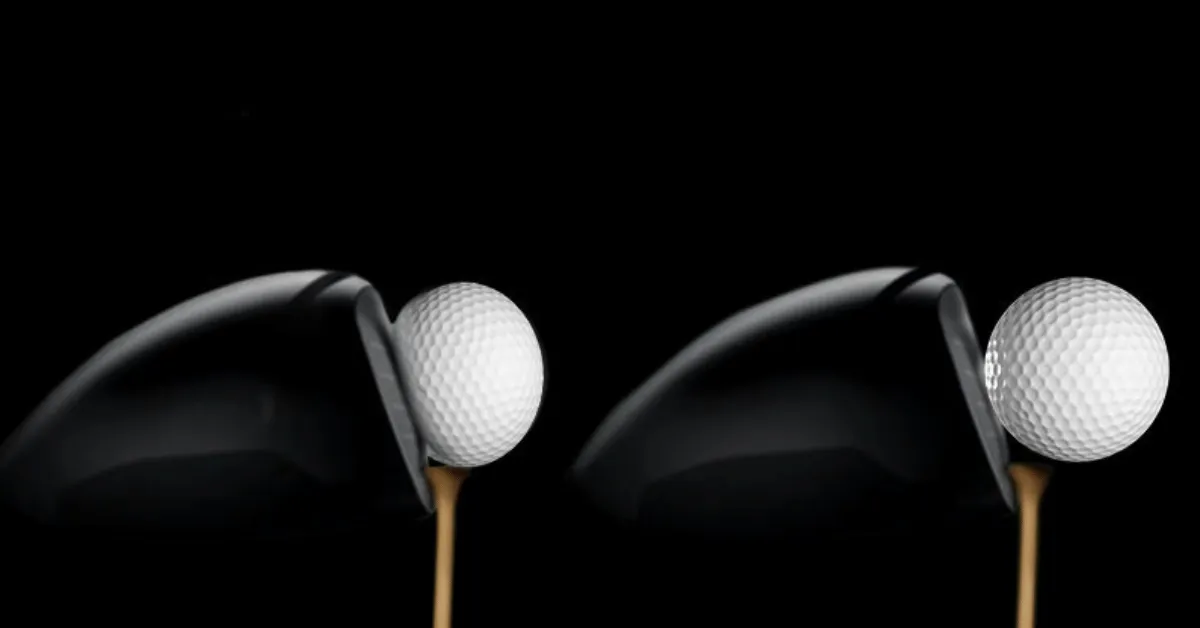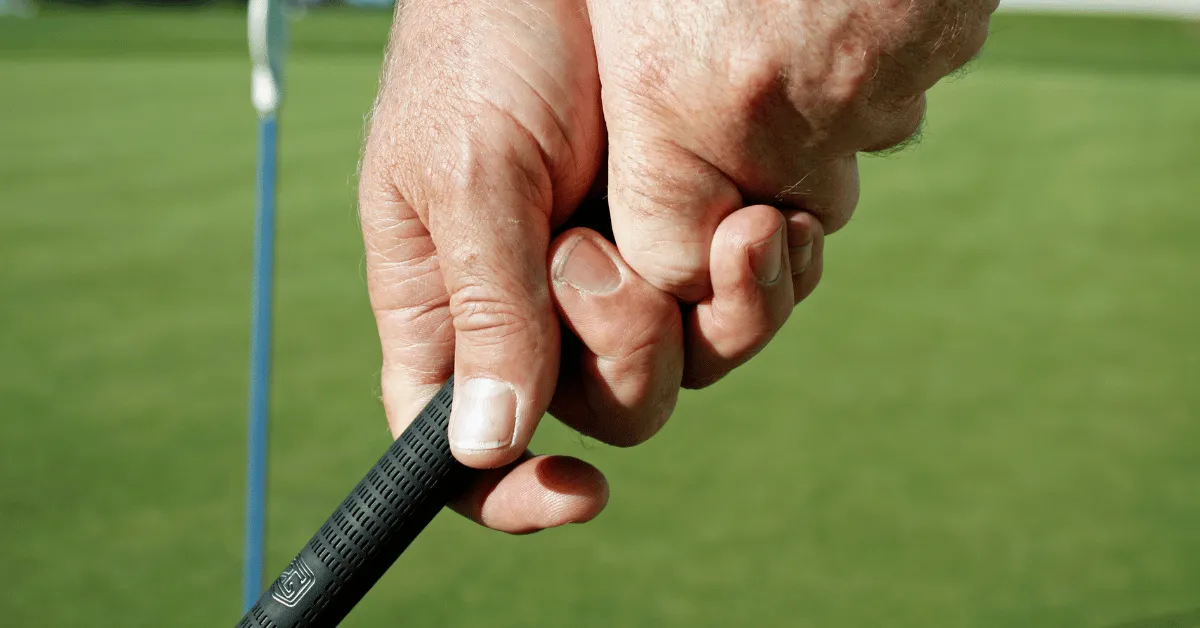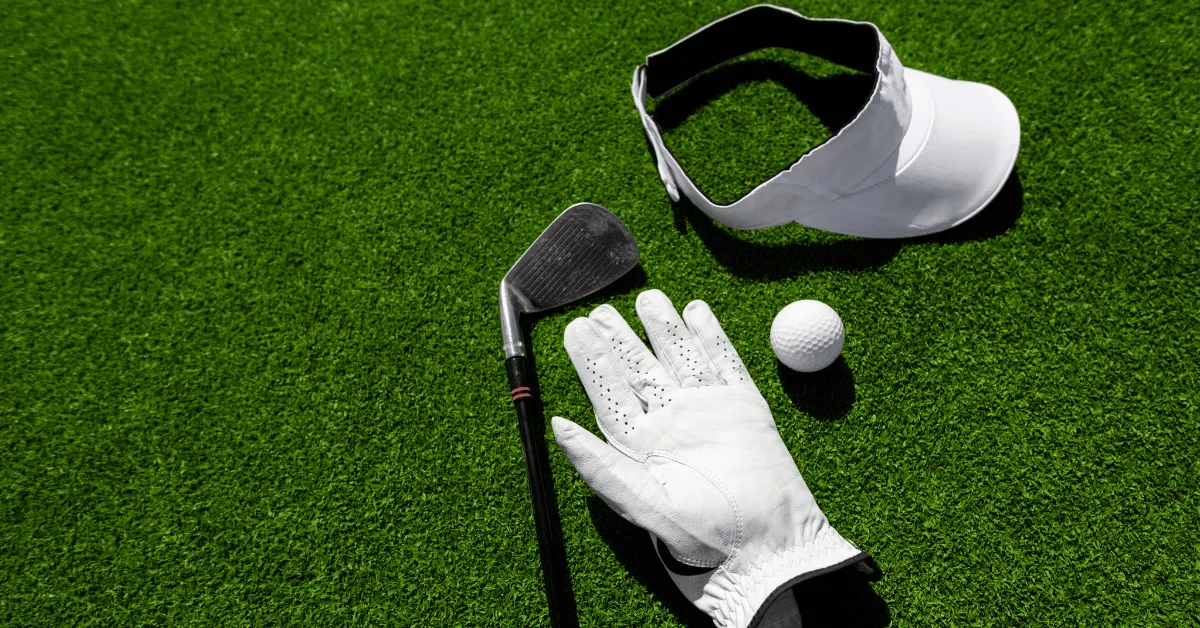Ever hit a golf ball and wondered why some fly easily, while others feel like hitting a rock?
The secret is in the compression!
Golf ball compression directly affects how the ball reacts upon impact and is bound to influence its distance, control, and feel.
When finding the right golf ball for your playing style, compression plays a significant role in matching the ball’s unique qualities to your game.
So, how do you pick the best compression to enhance your game?
Let’s look at how knowing compression can result in better shots and more entertaining rounds.
What is Golf Ball Compression?
Golf ball compression describes the degree to which a golf ball compresses when struck by a club head. It measures how tightly the materials inside the ball are compressed against each other.
When you strike a golf ball, it compresses, storing energy in contact with the clubhead and then discharging it.
The greater the energy in the shot, the more the ball is compressed. Moreover, compression crucially affects the ball’s trajectory, your ability to control it, and the sound and feel of striking it.
Low-compression golf balls are softer than high-compression golf balls. They compress more when hit while requiring higher force to deform.
Knowing your swing speed or style will help you determine the correct compression to get the best distance, particularly with accuracy.
Why Compression Matters?
It’s golf ball compression, which can change your game. The speed of your swing plays a big role in determining which compression works best for you.
Swinging faster?
You will want higher compression because you are looking for distance.
Swinging slower?
A lower compression ball will help deliver a greater energy transfer, generating more distance.
Types of Golf Ball Compression
There are usually three categories of golf ball compression types that are known among the ball players:
1. Low Compression (70-80 Rating)
These balls feel softer and are best suited for golfers of lower swing speeds (less than 85 mph). Low-compression balls move consistently when hit, providing players with more distance.
| Golf Ball | Layers | Ball Compression | Swing Speed | Price Range |
|---|---|---|---|---|
| Bridgestone Tour B RX | 3 Piece | Low (65) | < 80 mph | $$$$ |
| Bridgestone Tour B RXS | 3 Piece | Low (65) | < 80 mph | $$$$ |
| Cut Matte | 3 Piece | Low (65) | < 80 mph | $$ |
| Titleist Tour Soft | 2 Piece | Low (65) | < 80 mph | $$$ |
| Callaway ERC Soft | 2 Piece | Low (60) | < 80 mph | $$$ |
| Cut Red | 2 Piece | Low (60) | < 80 mph | $$$ |
| Srixon Soft Feel | 2 Piece | Low (60) | < 80 mph | $$ |
| Wilson Duo Professional | 3 Piece | Low (60) | < 80 mph | $$ |
| Bridgestone e12 Soft | 3 Piece | Low (50) | < 70 mph | $$$ |
| Wilson Fifty Elite | 2 Piece | Low (50) | < 70 mph | $$ |
| Callaway Superhot | 3 Piece | Low (50) | < 70 mph | $$ |
| Bridgestone e6 | 2 Piece | Low (45) | < 70 mph | $$ |
| Callaway Supersoft | 2 Piece | Low (40) | < 70 mph | $$ |
| Callaway Supersoft Magna | 2 Piece | Low (40) | < 70 mph | $$ |
| Taylormade Noodle Long / Soft | 2 Piece | Low (35) | < 70 mph | $$ |
| Wilson Duo Soft+ | 2 Piece | Low (35) | < 70 mph | $$ |
| Wilson Duo Optix | 2 Piece | Low (30) | < 70 mph | $$ |
| Mizuno RB 566 | 2 Piece | Low | < 80 mph | $ |
| Mizuno RB 566 V | 3 Piece | Low | < 80 mph | $ |
| Snell Get Sum | 2 Piece | Low | < 80 mph | $ |
| Taylormade Soft Response | 3 Piece | Low | < 80 mph | $$ |
| Titleist TruFeel | 2 Piece | Low | < 80 mph | $$$ |
| Vice Pro | 3 Piece | Low | < 80 mph | $$$ |
| Vice Tour | 3 Piece | Low | < 80 mph | $$ |
| Vice Pro Soft | 3 Piece | Low | < 80 mph | $$$ |
| Vice Drive | 2 Piece | Low | < 80 mph | $ |
| Wilson Zip | 2 Piece | Low | < 80 mph | $$ |
Many golfers prefer the softer feel of the ball because it allows for better control, especially when making short-game shots.
Low-compression golf balls also make less spin, which helps reduce the unwanted side spin and slices.
2. Mid Compression (80-90 Rating)
Mid-compression golf balls are nice because they balance feeling, distance, and control well.
| Golf Ball | Layers | Ball Compression | Swing Speed | Price Range |
|---|---|---|---|---|
| Callaway Warbird | 2 Piece | High 90 | + 95 mph | $ |
| Snell MTB-X | 3 Piece | High 90 | + 95 mph | $$$ |
| Srixon Z Star | 3 Piece | High 90 | + 95 mph | $$$ |
| Titleist Pro V1 | 3 Piece | High 90 | + 95 mph | $$$$ |
| Volvik XT AMT | 3 Piece | High 90 | + 95 mph | $$$$ |
| Bridgestone Tour B X | 3 Piece | Medium 85 | + 85 mph | $$$$ |
| Bridgestone Tour B XS | 3 Piece | Medium 85 | + 85 mph | $$$$ |
| Taylormade TP5 Pix | 5 Piece | Medium 85 | + 85 mph | $$$$ |
| Volvik S3 | 3 Piece | Medium 85 | + 85 mph | $$$ |
| Cut Grey | 3 Piece | Medium 80 | + 85 mph | $$ |
| Snell MTB – Black | 3 Piece | Medium 80 | + 85 mph | $$$ |
| Taylormade TP5 | 5 Piece | Medium 80 | + 85 mph | $$$$ |
| Titleist AVX | 3 Piece | Medium 80 | + 85 mph | $$$$ |
| Titleist Tour Speed | 3 Piece | Medium 80 | + 85 mph | $$$ |
| Volvik Vivid | 3 Piece | Medium 80 | + 85 mph | $$$ |
| Bridgestone e12 Speed | 3 Piece | Medium 75 | + 80 mph | $$ |
| Callaway Chrome Soft | 3 Piece | Medium 75 | + 80 mph | $$$$ |
| Srixon Q Star | 2 Piece | Medium 75 | + 80 mph | $$$ |
| Volvik Vi Max Soft | 2 Piece | Medium 75 | + 80 mph | $$ |
| Srixon Q-Star Tour | 3 Piece | Medium 70 | + 80 mph | $$$ |
| Taylormade Tour Response | 3 Piece | Medium 70 | + 80 mph | $$$ |
| Taylormade Project (a) | 3 Piece | Medium 70 | + 80 mph | $$$ |
| Volvik Power Soft | 2 Piece | Medium 70 | + 80 mph | $$ |
| Volvik XT Soft | 3 Piece | Medium 70 | + 80 mph | $$$$ |
| Callaway Strata Eagle | 3 Piece | Medium | + 80 mph | $ |
| Titleist Velocity | 2 Piece | Medium | + 80 mph | $$ |
| Volvik Solice | 3 Piece | Medium | + 80 mph | $$$ |
| Wilson ULTRA Distance | 2 Piece | Medium | + 80 mph | $$ |
| Wilson Tour Velocity Feel | 2 Piece | Medium | + 80 mph | $$ |
These balls transfer the energy of the softer ball while giving enough firmness to hold their shape for accurate long shots.
Many amateur golfers fall into this category as swing speeds typically hover around that range.
3. High Compression (90+ Rating)
These golf balls are designed for players with swing speeds above 100 mph.
| Golf Ball | Layers | Ball Compression | Swing Speed | Price Range |
|---|---|---|---|---|
| Mizuno RBX Tour X | 4 Piece | High 110 | + 105 mph | $$$$ |
| Cut DC | 4 Piece | High 105 | + 105 mph | $$$ |
| Taylormade TP5X Pix | 5 Piece | High 100 | + 105 mph | $$$$ |
| Titleist Pro V1 X | 4 Piece | High 100 | + 105 mph | $$$$ |
| Volvik S4 | 4 Piece | High 95 | + 95 mph | $$$ |
| Callaway Chrome Soft X | 4 Piece | High 90 | + 95 mph | $$$$ |
| Cut Blue | 4 Piece | High 90 | + 95 mph | $$ |
| Mizuno RB Tour | 4 Piece | High 90 | + 85 mph | $$$$ |
| Vice Pro Plus | 4 Piece | High | + 85 mph | $$$ |
| Volvik Crystal | 3 Piece | High | + 85 mph | $$$ |
| Srixon Z-Star XV | 4 Piece | High 100 | + 105 mph | $$$ |
| Taylormade TP5X | 5 Piece | High 90 | + 95 mph | $$$$ |
| Wilson Staff Tour | 4 Piece | High | + 95 mph | $$$$ |
High-compression golf balls deform less at impact, as high-compression golf balls enable more effective power usage among fast swing players.
High-swing speed players enjoy the control and accuracy that these high-compression golf balls offer.
How to Choose the Right Golf Ball Compression
Suitable golf ball compression is one issue that makes all the difference in the game. Here are some major considerations in selecting a golf ball compression:
1. Swing Speed
The big decision with compression is one related to your swing speed. If your swing speed is under 85, using a low-compression ball will boost your distance and provide a softer feel upon impact.
From 85-100 mph, a mid-compression ball will probably give the balance between as much distance as you want and still have enough control to take care of the business at hand.
Above the 100 range, you’ll get the control and performance you want from a high-compression ball.
2. Distance vs. Control
Low compression balls tend to be used as distance with low-swing speed players.
A high-compression ball with a relatively fast swing is excellent for an individual as it offers control over the ball.
For a beginner, a golf ball with low compression will impact the ball more, allowing you to hit the ball further.
An experienced player and one with a faster swing speed may opt for a high-compression ball due to the precision control required for shaping shots.
3. Feel
The feel of the golf ball is subjective but crucial in carrying out overall performance. Low-compression balls tend to feel softer; many players like these for putting and short-game shots.
High-compression balls feel firmer and give one a better feel on faster swings. It’s important to get a ball you feel comfortable with on all types of driving shots through putting.
4. Weather Conditions
Cold weather has a bearing on the behavior of the golf ball. Lower compression balls appear more compressive in cold conditions, firmer, and shorter for distance.
It may be used to maintain distance for a lower compression ball during colder rounds.
High-compression golf balls work well under warm conditions; due to the heat, balls naturally compress.
Impact of Golf Ball Compression on Different Types of Shots
Compression has varying effects on your game in different areas. Let’s see how it affects different shots:
1. Driving Distance
Golfers with slower swing speeds use low-compression golf balls to achieve greater distances on the course. With greater deformation, more energy will be stored inside, propelling it further.
Thus, high-compression golf balls are for fast swingers since they deform only slightly, thus transferring all the energy effectively.
2. Iron Play and Approach Shots
Compression of the ball on impact can impact accuracy in iron play. Faster golfers prefer highly compressed golf balls to reduce unwanted spin and improve shot shaping.
A low compression ball for the slower swinger provides a softer feel and allows easier control of approach shots.
3. Short Game Control
Greens demand control!
Balls with higher compression offer more spin and control when making short shots toward the green.
Low-compression balls are softer; while less compressive balls are soft, yielding a softer roll that helps the player achieve more control of ball movement whenever he or she uses a slower swing.
4. Putting
The ball has different sensations when it comes into contact with the putting surface. The level of accuracy depends on these feelings.
Low compression balls make a soft feel and give damped feedback during putting.
It will be helpful for players to make proper calculations of putting force. High-compression balls tend to have firmer feels while giving sharp feedback.
It attracts some players who prefer accuracy.
High Compression Golf Balls: Who Should Use Them?
It is probably supposed to be used when proper accuracy is expected.
Golfers with a swing speed of over 100 mph should use high-compression golf balls for best results.
If you have a fast swing with powerful power, these balls result in further control and accuracy in the shots.
Golfers, who enjoy high-compression balls, typically possess an established game and like to fine-tune their shots.
The harder feel and greater spin rates enable them to manipulate the ball’s flight to achieve the exact trajectory on various shots.
Low Compression Golf Balls: Who Should Use Them?
Low-compression golf balls are perfect for a player with a slow swing. These will help beginners, seniors, and players who can’t produce any high clubhead speed get extra miles on shots.
The softer feel is an added delight to those who do not want to feel the jarring impact of higher compression balls.
Golf Ball Compression Chart 2025: What to Expect?
As we look forward to the horizon of 2025, new developments in golf ball technology are continuously being made.
Manufacturers are upgrading compression technologies to produce balls with more distance and control.
New models of golf balls will find their way into the market with optimized compression ratings suited for the different swing speeds and playing styles.
Compression vs. Construction: What Matters More?
Of course, compression in a golf ball now matters, but construction does too.
Two-piece golf balls are usually lower in compression, which works better for distance.
A multi-layered ball with three or more layers offers advanced compression and is designed with control and feel in mind.
Golf Ball Fitting: Matching Compression to Your Game
A golf ball fitting is a nice way to determine which compression level suits you best.
Many professional fitters gather swing speed measurements and use preferences to recommend the ideal ball for every player.
If you don’t know what ball to use, it’s worth having a fitting session to align your compression level to your swing to get the most out of it.
Conclusion
The right golf ball compression changes the game for every type of player.
Knowing your swing speed and what you prefer to play will help you pick a ball, which maximizes your distance, control, and more in your game.
Whether new to the game or a seasoned pro, choosing the right compression level for your ball ensures that every shot is delivered at its best.
The right ball can make your experience more thrilling and enhance your performance while generating better results for you on the course.
Frequently Asked Questions?
1. What is golf ball compression?
Golf ball compression relates to how much the ball compresses upon impact. This impacts distance, control, and feel.
2. At what swing speed do you require high-compression balls?
Any golfer with a swing speed greater than 100mph requires high-compression balls to achieve more control and shot shaping.
3. How does cold weather impact golf ball compression?
A cold ball is less compressive, feels harder, and reduces distance. A low compression ball will help hold distance in cold weather.
4. For a beginner: Should they use a low-compression golf ball or a high-compression golf ball?
A lower-compression golf ball will give a beginner with a slower swing speed a better distance and a softer feel.
5. Will a ball fitting guide me to the appropriate compression?
Yes, it will be a golf ball fitting that suits your swing speed and playing style with the perfect compression to get to play at your fullest.





0 Comments